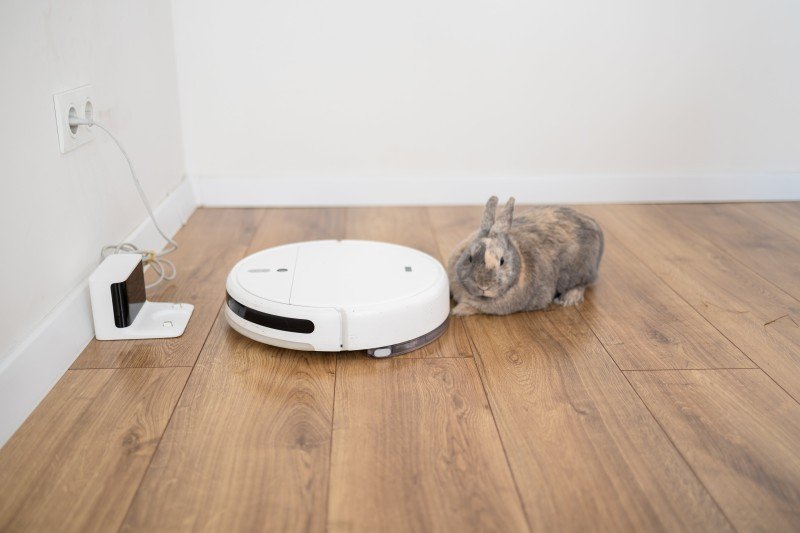Which Robot Vacuum Cleaner Should You Choose? A Comprehensive Guide
In today's hectic world, benefit and performance are essential, and robotic vacuum have emerged as a popular option for keeping homes clean without the hassle of manual vacuuming. With a wide variety of models readily available, selecting the best robot vacuum can be frustrating. This post intends to supply detailed insights into what to consider when choosing a robot vacuum, its features, and some frequently asked questions.
Key Features to Consider
When assessing different robot vacuum, several key functions can help in making an informed choice. Below are some vital aspects to think about:
1. Suction Power
- The suction power is critical for getting dirt and particles successfully. Recommended Browsing for designs with adjustable suction settings for numerous floor types.
2. Navigation Technology
- Advanced designs use laser mapping and cams, enabling them to navigate efficiently around obstacles and map out rooms for targeted cleaning.
3. Battery Life
- Consider the length of time the vacuum can operate on a single charge. A longer battery life makes sure more extensive cleaning sessions before needing to charge.
4. Size and Design
- A compact style enables the robot to tidy under furnishings and in hard-to-reach locations. Inspect dimensions to guarantee it suits your home design.
5. Dustbin Capacity
- Larger dustbins need less regular emptying. Evaluate just how much particles the model can hold before requiring to be cleared.
6. Smart Features
- Connectivity options, such as Wi-Fi and app control, enable remote scheduling and tracking. Voice control capabilities through assistants like Alexa or Google Assistant can likewise boost use.
7. Rate
- Robot vacuums vary from budget-friendly to high-end designs, so consider your cleaning needs and spending plan when deciding.
8. Consumer Reviews and Warranty
- Research user feedback to understand the strengths and weaknesses of each model. A strong guarantee can offer assurance about your purchase.
Comparisons of Popular Robot Vacuum Cleaners
To assist in understanding the alternatives available, here are some popular robot vacuum and their functions in the form of a comparison table:
| Model | Suction Power | Battery Life | Navigation Technology | Smart Features | Rate Range |
|---|---|---|---|---|---|
| iRobot Roomba i7+ | High | As much as 75 min | Smart mapping | App control, voice control | ₤ 600 - ₤ 800 |
| Neato Botvac D7 | Medium | Approximately 120 min | Laser-guided | App control, No-Go Lines | ₤ 600 - ₤ 700 |
| Roborock S7 | Really High | As much as 180 minutes | LiDAR Navigation | App control, mop function | ₤ 500 - ₤ 650 |
| Eufy RoboVac 11S | Low | Approximately 100 min | Random navigation | Push-button control | ₤ 250 - ₤ 300 |
| Ecovacs Deebot Ozmo T8 | Medium | Approximately 180 min | Smart mapping | App control, voice control | ₤ 600 - ₤ 750 |
Cost ranges and functions go through alter, so it's suggested to inspect the latest specs before purchasing.
Pros and Cons of Robot Vacuum Cleaners
Pros
- Time-Saving: Robot vacuum cleaners can automate day-to-day cleaning jobs, maximizing time for other activities.
- Convenience: Many models can be controlled by means of apps, enabling users to set up cleaning on-the-go.
- Consistency: Regular cleaning sessions can avoid the accumulation of dirt and allergens in a home.
- Availability: Robot vacuums can reach spaces that traditional models typically can not, such as under furniture.
Cons
- Minimal Capacity: Most robot vacuums have a smaller dustbin compared to conventional vacuum, requiring frequent emptying.
- Rate: High-end models can be costly, and spending plan designs may lack important functions.
- Surface area Limitations: Some robot vacuums may have problem with certain surfaces, such as high-pile carpets.
- Upkeep: Brushes and filters need routine cleaning and replacement to maintain optimum efficiency.
Regularly Asked Questions (FAQs)
Q1: How do robot vacuum cleaners work?Robot vacuums are geared up with sensing units and brushes that help them navigate a room while collecting dirt and debris. Their smart mapping innovation permits them to create a layout of the home, allowing efficient cleaning patterns.
Q2: Can robot vacuums clean several surfaces?Yes, many robot vacuum are developed to work on a variety of surfaces, including wood, tile, and low to medium-pile carpets. Nevertheless, some may be less effective on high-pile carpets.
Q3: How typically should I run my robot vacuum?It's usually recommended to run a robot vacuum at least when a week. Nevertheless, families with animals or big amounts of foot traffic might gain from daily cleaning.
Q4: Are robot vacuums worth the financial investment?If time and benefit are high priorities, a robot vacuum can be a rewarding investment. It automates an important chore, allowing property owners to focus on other jobs.
Q5: How much noise do robot vacuum make?Many robot vacuums run at a sound level comparable to traditional vacuums but may differ by model. Research user evaluates for sound levels if this is an issue.
Picking the best robot vacuum cleaner needs careful consideration of numerous elements, including suction power, navigation innovation, and unique features. By weighing benefits and drawbacks while comparing popular models, consumers can find the very best fit for their cleaning requires. As robot vacuum technology continues to develop, their abilities and affordability are most likely to improve, making them an important addition to the modern home.

